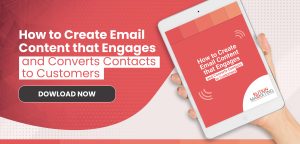What Are Google and Yahoo’s Email Sender Requirements for 2024?

As we step into a new year filled with opportunities and challenges, it’s important to be aware of some significant email marketing developments.
In early 2024, Google and Yahoo are set to introduce new email sender requirements to create a “safer, less spammy inbox“, as Google puts it. These changes apply to all senders that email Gmail and Yahoo addresses, particularly those categorized as “bulk senders.”
The advantages for email recipients are numerous, including improved email security, simplified unsubscribing, and reduced spam. But what does this mean for sales representatives, and how will it affect your outreach efforts? In a nutshell, this means the practice of “spray and pray” prospecting will become impossible. Sales representatives will need to prioritize quality over quantity or risk Google and Yahoo blocking all emails sent from your company.
In today’s article, we will do a thorough breakdown of these changes, their impact on outreach strategies, and what steps you can take to ensure continued email marketing success in 2024.
Want more marketing news? Subscribe to our free newsletter.
What Specific Requirements Will Gmail & Yahoo Impose on Bulk Senders?
Emails are a powerful tool for sales representatives in lead generation, yet they have also been misused for spamming. Google and Yahoo are now taking effective measures to address this issue. Gmail’s AI-powered defenses currently thwart over 99.9% of spam, phishing attempts, and malware, blocking nearly 15 billion unwanted emails daily. However, their efforts to improve email security have led to new requirements for bulk senders—those sending more than 5,000 messages to Gmail addresses in a day—to make inboxes safer and reduce spam.
The reason behind these measures is that many bulk senders inadequately secure and configure their systems, creating a breeding ground for potential attackers. To rectify this, Google has focused on a crucial aspect of email security: validating the authenticity of senders and requiring emails sent to Gmail addresses to have some form of authentication. This has resulted in a 75% reduction in unauthenticated messages, making inboxes cleaner and blocking malicious messages more effectively.
With the introduction of these new requirements, Google is proactively combatting spam, phishing, and malware. This challenge to make email communication safer is not exclusive to Google. Yahoo is also committed. Marcel Becker, Senior Director of Product at Yahoo, says, “No matter who their email provider is, all users deserve the safest, most secure experience possible… In the interconnected world of email, that takes all of us working together. Yahoo looks forward to working with Google and the rest of the email community to make these common sense, high impact changes to the new industry standard.”
These changes will come into effect from February 2024. Bulk senders will need to:
- Authenticate Emails: Bulk senders must follow established best practices for email authentication to prevent abuse and enhance security.
- Simplify Unsubscription: Large senders must make it easy for Gmail recipients to unsubscribe from commercial emails and process these requests promptly.
- Deliver Relevant Emails: Google will set clear spam rate thresholds that senders must meet to ensure Gmail users receive wanted messages and avoid being overwhelmed by spam.
How Will Email Marketing Strategies Change for Sales Representatives?
If you or your company rely on email as a means of communicating with customers and you have not implemented email authentication, be prepared for a significant impact on the deliverability of your messages to Gmail and Yahoo account holders, particularly if you send more than 5,000 emails to these accounts daily. You need to be aware of the following:
1. Mandatory SPF and DKIM
Companies that send emails to Gmail or Yahoo accounts must prioritize the implementation of robust authentication methods, such as Sender Policy Framework (SPF) and DomainKeys Identified Mail (DKIM). These methods are essential security measures to verify the authenticity of the sender and the integrity of the email content.
SPF defines authorized mail servers for a domain, while DKIM adds digital signatures to emails, ensuring they haven’t been tampered with during transit. Together, these authentication methods improve email security and reduce the risk of unauthorized use of your domain for malicious purposes.
2. Implement DMARC
Mandatory adoption of Domain-based Message Authentication, Reporting, and Conformance (DMARC) is crucial in the fight against email spoofing, phishing, and cyberattacks. DMARC operates at the domain level, allowing organizations to establish policies for handling emails that fail authentication checks. This improves email security and helps protect your brand’s reputation.
DMARC records published in the Domain Name System (DNS) provide clear instructions to email receivers on how to treat unauthenticated emails, ensuring that messages meet DMARC standards. It is important to align the Envelope From domain with the Header From domain or ensure that the DKIM domain aligns with the Header From domain to meet DMARC requirements effectively.
3. One-Click Unsubscribe
To provide a user-friendly experience and meet email marketing best practices, including List-Unsubscribe headers and a prominent, one-click unsubscribe link in subscribed emails is essential. This empowers recipients to easily opt out of receiving further communications, promoting transparency and compliance with anti-spam regulations. Promptly processing unsubscribe requests, ideally within two days, demonstrates respect for users’ preferences and helps maintain a positive sender reputation.
4. Message Formatting Guidelines
When you send emails, it is important to follow some basic rules. This includes using a standard format for your emails, including RFC 5322 and HTML, to ensure that your emails display correctly and professionally across various email clients. Avoid using HTML and CSS to hide content within messages, as this can trigger spam filters, reducing email deliverability and stopping your emails from landing in your prospect’s inbox.
Additional recommendations include single-instance message headers (e.g., From, To, Subject), which should be included only once to avoid confusion. Clear and visible web links in the message body enhance user experience and reduce the likelihood of emails being flagged as suspicious. It’s crucial to maintain accurate sender information, such as a recognizable sender name and email address, and ensure message subjects are truthful and non-misleading. For international audiences, formatting email addresses and content according to Unicode Technical Standard #39 helps avoid display issues and improves accessibility.
5. Sending Practices to Avoid
If you are to maintain a positive sender reputation and comply with email marketing best practices, it is important to avoid certain practices:
Avoid mixing different types of content in a single email, as this can confuse recipients and reduce engagement.
Never impersonate other domains or senders, as this constitutes email spoofing and can lead to serious consequences such as blacklisting by email providers.
Avoid purchasing email addresses. Instead, focus on building your email list with individuals who have willingly opted in to receive communications.
Avoid using opt-in forms that automatically subscribe users without clear and explicit consent, as this can lead to spam complaints and harm your sender’s reputation.
Are You Ready for the Email Updates?
In this evolving email marketing landscape, adaptability and compliance with best practices will be the keys to continued success. If you don’t adapt to these evolving standards, your email marketing efforts risk becoming obsolete and ineffective. While it may seem a bit overwhelming, it’s essential to assess your readiness for these updates.
As we move forward into 2024, embracing these changes and staying committed to delivering value to email recipients will ultimately lead to stronger relationships with customers and improved results in email marketing.
Rutkin Marketing, a South Florida marketing agency, is dedicated to bridging the marketing gap by developing high-performance marketing strategies for your long-term success.
Schedule a free 30-minute consultation with Rutkin Marketing and take the first step toward improving your email marketing effectiveness and achieving your business goals.


